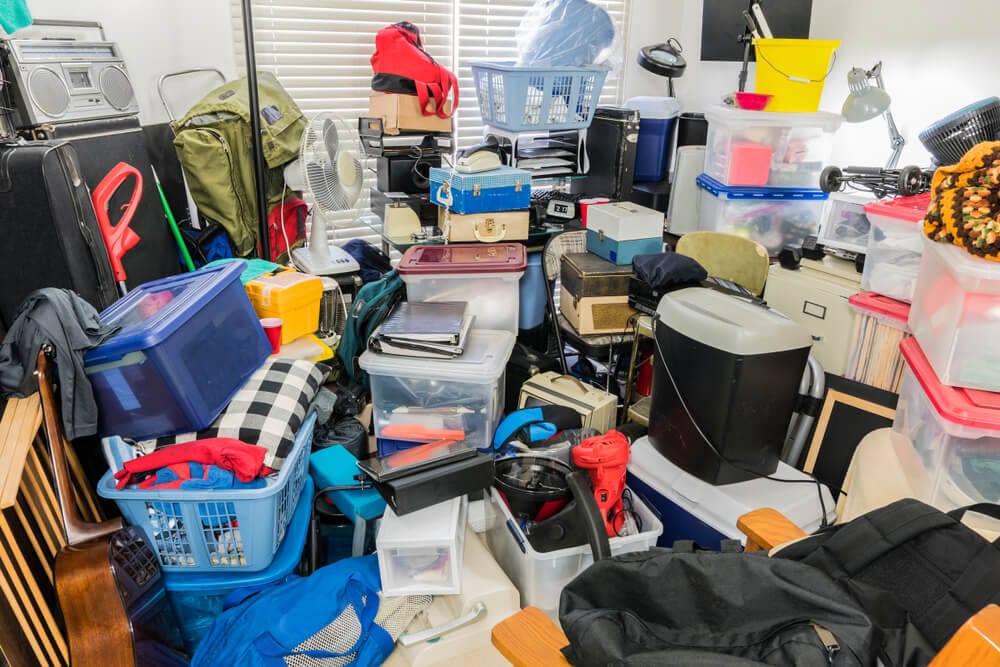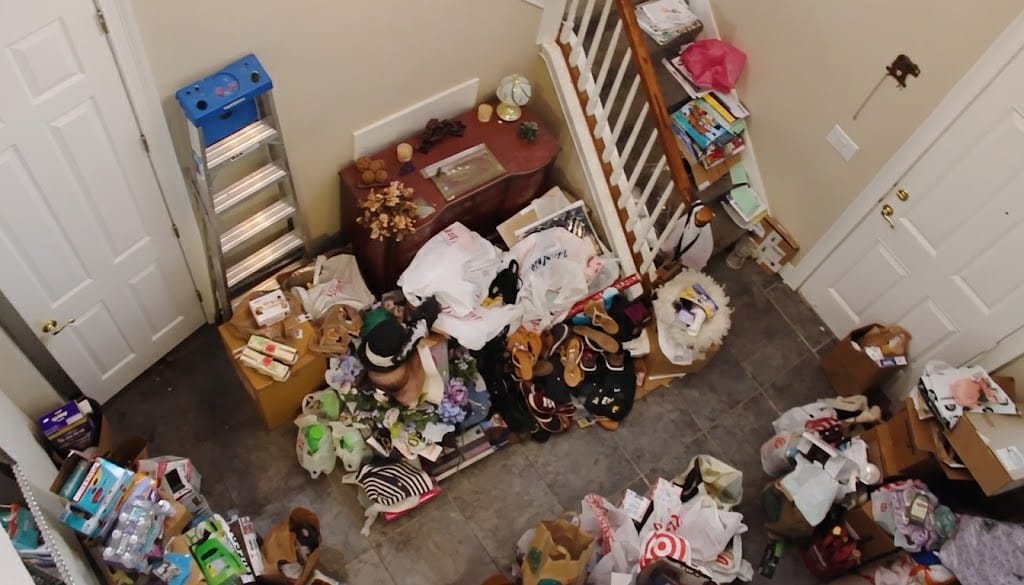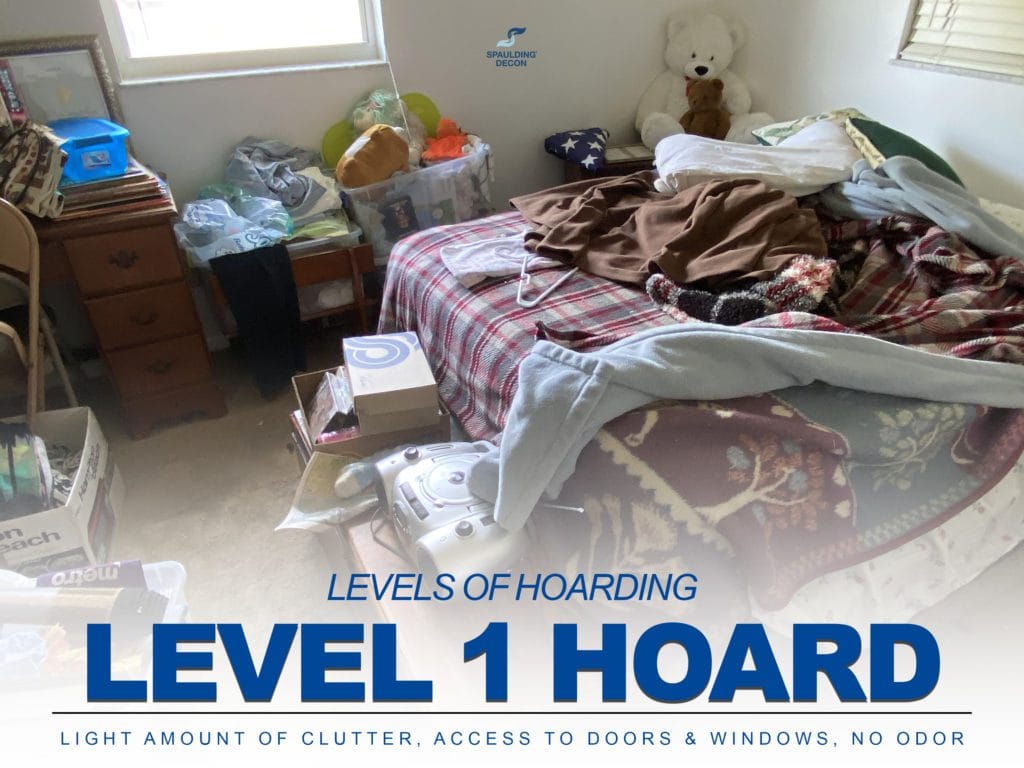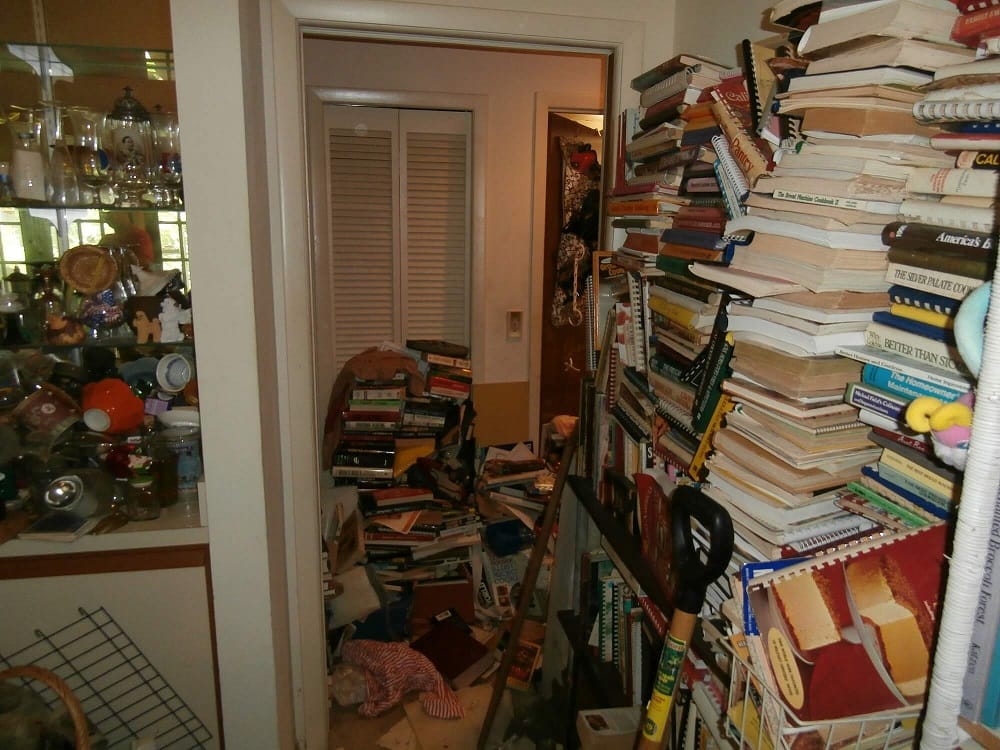Hoarding disorders require help from those nearest them
Many people take hoarding lightly, even though its a very serious disorder. Like most other things, hoarding starts slowly, and most people who suffer from this disorder arent even aware of it until its too late. However, people who compulsively acquire new objects are sometimes aware of it but refuse to acknowledge and deal with it.
If youre wondering how to help a hoarder or are perhaps struggling to deal with a hoarder in your family, take a moment to check out some of the points weve made in this article. While its far from being a collection of rules, its designed to help and offer you a better insight into the mindset of people who are hoarders.
What is a Hoarding Disorder?
Before we dive deeper into the matter, its important to get familiar with the condition itself so that we can understand the concept and make the battle against it a bit easier.
According to the Mayo Clinic,
Hoarding disorder is a persistent difficulty discarding or parting with possessions because of a perceived need to save them. A person with a hoarding disorder experiences distress at the thought of getting rid of the items. Excessive accumulation of items, regardless of actual value, occurs.
As you can tell, hoarding has nothing to do with the value of the items that are being accumulated, nor does it have anything to do with collectibles. The difference between hoarding and collecting is pretty simple , hoarders seldom seek to display their possessions, while in collecting, people proudly display their belongings and keep them organized.
How To Help a Hoarder Who Doesnt Want Help?
The first thing you should remember if youre looking to help a person in need is to avoid forcing them to do anything. Nothing good ever comes from forcing one to change their habits, and thats why this is a process rather than being an intervention.
- Providing Motivation and Listening to What They Have to Say
One of the best things you can do is listen, even though it doesnt seem effective at first glance. Many hoarders struggle to articulate the reasoning behind their behavior, and more importantly , most of them are quite embarrassed to admit that they have a problem.
Being a good listener allows you to help them open up about the issues that have been troubling them for a long time. Instead of acting like a psychologist and offering a bunch of quick solutions, you should listen carefully and ask questions that might help streamline the process of getting rid of this horrible addiction.
Try to get to the bottom of the problem by circling around with important questions, and you will, sooner or later, find success.
- Encourage Them To Seek Professional Help
There is nothing embarrassing in admitting you have a problem and asking for help. In fact, it might be one of the only effective ways to deal with this problem, especially if its particularly severe.
If youre looking for the answer to the question of how to get help for a hoarder, scheduling an appointment with a professional would be an excellent start. However, not all people are eager to share their predicaments with another person (even if that other person is a licensed professional), so be sure to bring this up gradually rather than insisting on it.
- Do Not Clean Up For Them
Even though youre looking to help your friend or family member, one thing you should NOT do is take it on yourself and cleanup for them. Individuals who are struggling with hoarding disorder should make a conscious and independent decision to better themselves. While its good and recommended for you to intervene as a friend, cleaning things up for and instead of your friend is definitely a bad idea.
- Help Them Sort Out Their Stuff
In some severe cases, hoarders accumulate so many things that it fills up the whole house. Even if you manage to persuade them to stop hoarding, something has to be done about the already hoarded items or else your endeavors are in vain.
There is no easy way around this. You will have to volunteer to help your friend or loved one sort their things out, get rid of worthless items, and more importantly , prevent them from doing it all over again.
- Take Some Time to Educate Yourself
As weve mentioned, hoarding is no laughing matter. Even though some people might think they are familiar with this particular disorder, its often not the case. In fact, helping your friend the way you are not supposed to is always going to cause more harm than good. Thats why it is important that you inform and educate yourself about this condition and take the right steps rather than doing what you think is right and (seemingly) helpful.
- Praise a Change and Celebrate Small Victories
Very rarely will you manage to cure your friend in one go. As weve mentioned, going through hoarding rehabilitation is more of a process rather than being an intervention, and thats why its important to take things slowly and celebrate small victories. Dont hesitate to commend an improvement because thats one of the most effective ways to motivate your friend to keep pushing even further. It will definitely take a lot of time before you see a massive improvement, but small steps are what counts here.

How To Deal With a Hoarder in the Family?
Even though there is not much difference between dealing with friends and family members, there are a couple of things you should keep in mind.
Firstly, you should acknowledge that the person has a right to make their own decisions. This shows a healthy amount of respect as well as affection. Team up with them and ask them about their issues; family members tend to have a stronger bond in comparison to friendships. Therefore, its always a good idea to sit down with your brother, mother, father, or anyone who needs help and just talk to them. Naturally, you should avoid being judgmental as that will only worsen the situation.
Also, never toss anything out without permission. Even if you think a particular item is worthless, obsolete, or simply doesnt belong somewhere, you dont have the right to throw something out that isnt yours.
What are the Negative Effects of Hoarding?
While most people are aware of the obvious downsides of compulsive hoarding, there are some things that arent as apparent. Here are a couple of alarming downsides of hoarding:
- Constant Clutter
Severe clutter is not only visually unappealing, but its also a serious health hazard. On top of that, it can also be a structural and fire hazard, depending on the severity of the case.
Many hoarders simply forget about 90% of things they have underneath the first few layers of clutter. This can be extremely dangerous because a single pack of white-phosphorous matches can self-ignite and cause a catastrophe, even though they have been buried under a pile of worthless stuff for decades.
- Conflicts with Family and Friends
No matter how affectionate and tolerant you are, there will come a time when youve just had enough of it. This is a serious issue, and it has affected numerous families and tore them apart. Thats why its important to act promptly and help your friend or family member as soon as you notice something is off (a room full of worthless and disorganized stuff is a rather obvious clue).
- Evictions and Financial Issues
It goes without saying that most landlords wont tolerate any level of hoarding, let alone the severe cases. Consequently, your friend will end up on the street sooner or later, and more importantly , this can lead to hospitalization and homelessness, both of which are alarming, to say the least.
Look for Ways to Help Them
Instead of looking at how to deal with a hoarder, you should instead look for ways to help them. We have covered a few methods and ways you can use in order to help your friend or family member, but rest assured there are plenty of other options out there.
The essential thing you should remember is to stay calm, collected, and most importantly , tolerant. You will, most certainly, have to go through a lot of tough moments, but in the end, all that counts is the level of success. With that being said, dont be afraid of failure because youll very rarely manage to help your loved one right from the get-go.
If you would like to know more about disorders, hoarding cleanup procedures, and similar subjects, dont hesitate to read our other articles! They are a great resource for anyone whos looking to solve a particular predicament but isnt sure how.





